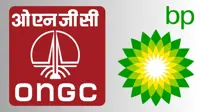One-molecule-thick material has big advantages
24 Aug 2012
The discovery of graphene, a material just one atom thick and possessing exceptional strength and other novel properties, started an avalanche of research around its use for everything from electronics to optics to structural materials. But new research suggests that was just the beginning: a whole family of two-dimensional materials may open up even broader possibilities for applications that could change many aspects of modern life.
The latest ''new'' material, molybdenum disulfide (MoS2) - which has actually been used for decades, but not in its 2-D form - was first described just a year ago by researchers in Switzerland.
But in that year, researchers at MIT - who struggled for several years to build electronic circuits out of graphene with very limited results (except for radio-frequency applications) - have already succeeded in making a variety of electronic components from MoS2. They say the material could help usher in radically new products, from whole walls that glow to clothing with embedded electronics to glasses with built-in display screens.
A report on the production of complex electronic circuits from the new material was published online this month in the journal Nano Letters; the paper is authored by Han Wang and Lili Yu, graduate students in the Department of Electrical Engineering and Computer Science (EECS); Tomás Palacios, the Emmanuel E. Landsman Associate Professor of EECS; and others at MIT and elsewhere.
Palacios says he thinks graphene and MoS2 are just the beginning of a new realm of research on two-dimensional materials. ''It's the most exciting time for electronics in the last 20 or 30 years,'' he says. ''It's opening up the door to a completely new domain of electronic materials and devices.''
Like graphene, itself a 2-D form of graphite, molybdenum disulfide has been used for many years as an industrial lubricant. But it had never been seen as a 2-D platform for electronic devices until last year, when scientists at the Swiss university EPFL produced a transistor on the material.

.webp)

.webp)



.webp)

























